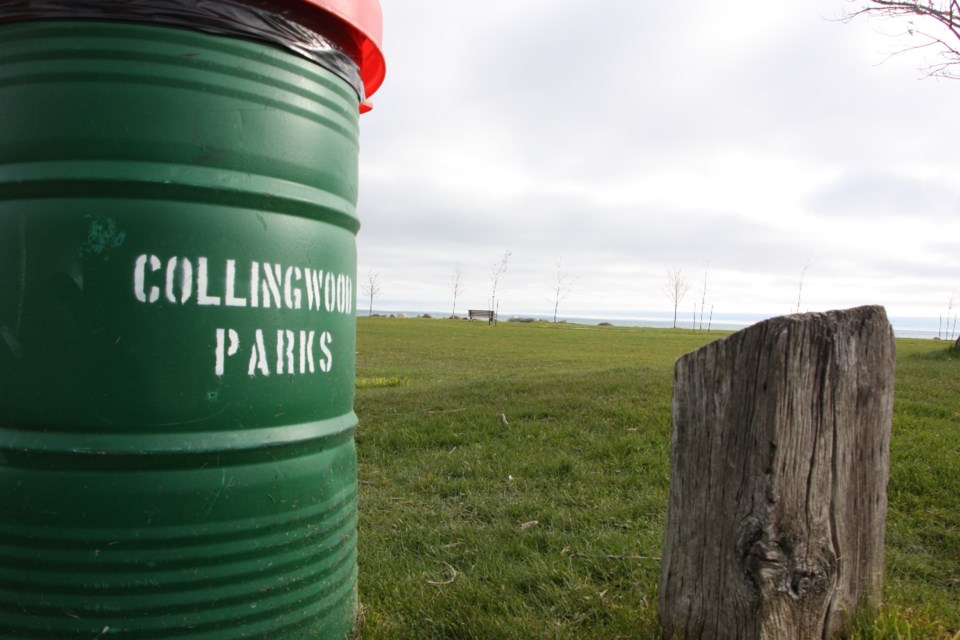The Town of Collingwood deals with more than just roads and water, and this week councillors got a look at the other town assets that may not get as much attention.
During their committee of the whole meeting on July 22, council heard a report from town treasurer Monica Quinlan on the town’s non-core assets, their estimated value, and how much they’re all worth.
“We’ve talked about asset management time and time again, and I’m sure you’re sick of even hearing the words,” Quinlan said to councillors. “It’s so vital to the municipality, to residents and the services we provide to them.”
A town’s assets include all infrastructure owned by the town. Unlike core assets, which include roads, bridges, water, sewer and stormwater infrastructure, non-core assets include facilities, libraries, parks, vehicles and equipment.
The plan describes the characteristics and condition of the infrastructure, as well as what is expected from them, for how long they are expected to last, and what is needed for them to be maintained.
The idea behind asset management is that municipalities should be socking away money annually for the entire lifespan of a town asset so when it comes time to replace it, there is money waiting in reserves put aside for that purpose.
“The first time an asset comes, development charges pay for it, but the next time you have to replace it, now it’s back on the taxpayer,” explained Quinlan.
For a 166-year-old town like Collingwood, not adequately keeping up with asset management has had its effects.
As part of the 2024 budget presentations, staff provided an update on the progress of the town’s asset management strategy, which showed that increasing inflation and an ongoing financing gap year-over-year were going to put the town in a tough spot down the road with a $1.2 million funding gap as of 2024.
According to projections at that time, Collingwood’s asset management reserve funds will deteriorate to nothing by 2031 if there aren’t additional investments made through the budget annually for that purpose.
Asset management isn’t entirely funded through taxes. Also contributing to the lifecycle reserve fund that pays for asset management are grants through the Ontario Community Improvement Fund and the federal gas tax.
During her presentation this week, Quinlan said the average annual amount currently spent and/or saved through town reserves amounts to approximately $916,000, leaving a financing gap of $4.6 million. Together with the core asset financing gap, this results in a total financing gap of $5.8 million annually.
As of now, the total replacement cost for all Town of Collingwood facilities is $142 million, transit shelters is $440,000, streetlights is $12.8 million, trails is $10.4 million, library assets is $1.6 million, fleet and equipment is $24.6 million, downtown parking lots is $2.1 million and parks is $35.9 million for a total of $230 million.
In terms of the condition of those assets, facilities, transit shelters, trails, IT equipment, fleet and equipment and parks are all listed in ‘Good’ condition. Library assets and streetlights are listed as in ‘Fair’ condition, while the downtown parking lots are listed in ‘Fair/Poor’ condition.
“The age of the town is a significant factor,” said Quinlan.
“It’s like a little snowball at the beginning, but if we turn our heads and look away, it just keeps going down the hill,” she said. “It is important to understand that we are not alone in this.”
Earlier this year, the CBC reported that the City of Toronto is facing a $26 billion infrastructure gap over the next decade.
“I’m glad the province has made municipalities do this, because we don’t want to be where Toronto is,” said Mayor Yvonne Hamlin. “It’s going to be hard for any municipality to deal with this just on the back of taxpayers.”
The Town of Collingwood’s first asset management plan was received and approved by council in July 2014.
While the province of Ontario has encouraged municipalities to develop asset management plans for many years, it wasn’t until 2017 that it became mandatory for municipalities to develop and adopt such plans through the province’s Infrastructure for Jobs and Prosperity Act.
The first requirement through the act was for municipalities to develop a strategic asset management policy by July 1, 2019, which Collingwood did in June that year.
The town is currently working through its full asset management plan. Phase 1 which took stock of all the town’s core assets finished in July 2022, and Phase 2 does the same for non-core assets and is expected to be completed this month. Phase 3 will consider detailed service levels, life-cycle management, and financial strategies for all assets, which is due mid 2025.
At the end of discussion, council voted unanimously in favour of directing staff to include the non-core asset information into the town’s overall asset management plan. Any decisions made during committee of the whole need to be ratified at the next regular council meeting before going into effect.



